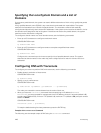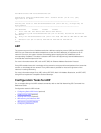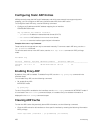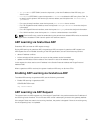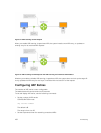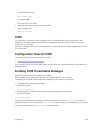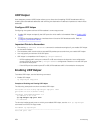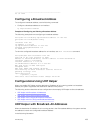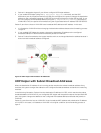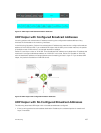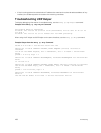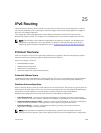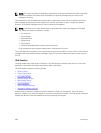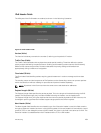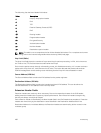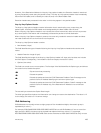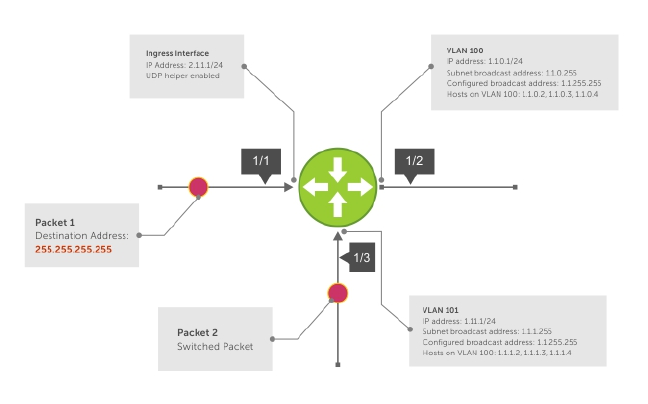
1. Packet 1 is dropped at ingress if you did not configure UDP helper address.
2. If you enable UDP helper (using the ip udp-helper udp-port command), and the UDP
destination port of the packet matches the UDP port configured, the system changes the destination
address to the configured broadcast 1.1.255.255 and routes the packet to VLANs 100 and 101. If you
do not configure an IP broadcast address (using the ip udp-broadcast-address command) on
VLANs 100 or 101, the packet is forwarded using the original destination IP address 255.255.255.255.
Packet 2, sent from a host on VLAN 101 has a broadcast MAC address and IP address. In this case:
1. It is flooded on VLAN 101 without changing the destination address because the forwarding process
is Layer 2.
2. If you enabled UDP helper, the system changes the destination IP address to the configured
broadcast address 1.1.255.255 and forwards the packet to VLAN 100.
3. Packet 2 is also forwarded to the ingress interface with an unchanged destination address because it
does not have broadcast address configured.
Figure 46. UDP Helper with Broadcast-All Addresses
UDP Helper with Subnet Broadcast Addresses
When the destination IP address of an incoming packet matches the subnet broadcast address of any
interface, the system changes the address to the configured broadcast address and sends it to matching
interface.
In the following illustration, Packet 1 has the destination IP address 1.1.1.255, which matches the subnet
broadcast address of VLAN 101. If you configured UDP helper and the packet matches the specified UDP
port, the system changes the address to the configured IP broadcast address and floods the packet on
VLAN 101.
Packet 2 is sent from the host on VLAN 101. It has a broadcast MAC address and a destination IP address
of 1.1.1.255. In this case, it is flooded on VLAN 101 in its original condition as the forwarding process is
Layer 2.
456
IPv4 Routing



